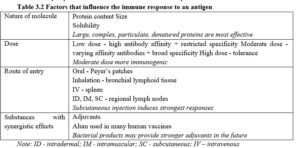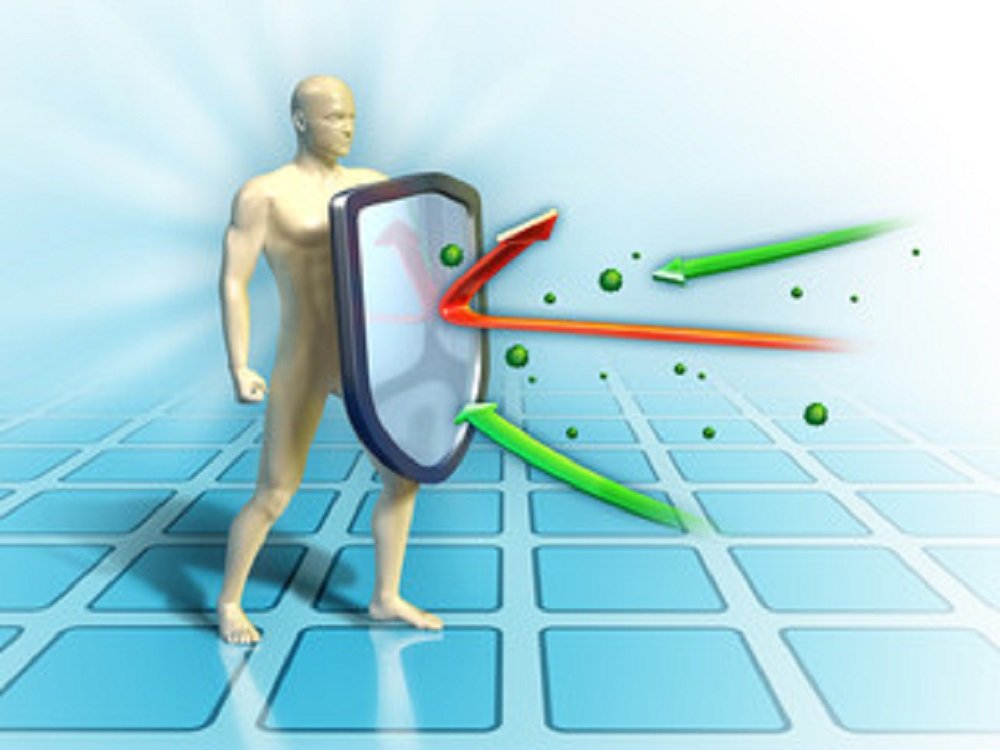The term antigen originally described any substance that could induce antibody formation. Antigens include proteins, carbohydrates, lipids and nucleic acids. Following characterisation of the cellular immune response, the use of the term antigen was expanded to include any substance that activated the immune response. Autoantigens are molecules found on host tissues that can induce an immune response.

Antigenic determinants and epitopes Antibodies or lymphocytes produced in response to an antigen are directed against specific parts of the molecule called antigenic determinants or epitopes and not against the whole molecule. Epitopes are the smallest unit of antigens which can elicit an immune response. One molecule may have several identical or different epitopes, for example, a carbohydrate with repeating sugar units has several identical epitopes, while a large single chain protein has many different antigenic epitopes.
Conformational and linear epitopes Antibodies usually bind conformational epitopes dependent on folding of the molecule (tertiary structure). Molecular folding brings different parts of a linear peptide chain close together, forming a single, discontinuous epitope. Many antibodies bind conformational epitopes in native proteins, but will not bind the denatured unfolded molecule. In contrast, T cell receptors recognise linear epitopes arising from the linear amino acid sequences of peptide antigens (primary structure) (Figure 3.4).

Haptens Haptens are small molecules that can bind antibody but are incapable of inducing an adaptive immune response alone. Haptens must bind carrier molecules to elicit antibody and T cell responses. Haptens such as drugs may elicit responses when bound to host proteins and anti-hapten antibodies may mediate allergic drug reactions.
IMMUNOGENICITY Molecules that can stimulate an adaptive immune response are said to be immunogenic and can also be called immunogens. Factors other than antigen characteristics influence immunogenicity (Table 3.2). Substances that improve an immune response to antigens are called adjuvants. Purified proteins may be poorly immunogenic and carbohydrates, nucleic acids and other types of molecule usually require modification to induce an immune response.

TARGETS OF THE INNATE IMMUNE RESPONSE Groups of organisms often have distinctive molecular patterns that are targets of the innate immune response. Table 3.3 summarises the most important of these targets and corresponding organisms, the pattern recognition receptor or molecule and their cellular location. Pattern recognition molecules (PRMs) are utilised by the innate immune response, to facilitate removal of pathogens.

Antigen targets of the adaptive immune response: thymus-dependent and thymus-independent antigens
Thymus-dependent (TD) antigens (most proteins) require T cell help to induce antibody production. Thymus-independent (TI) antigens induce antibody production without T cell help; some bacterial polysaccharides, polymeric proteins and lipopolysaccharides can directly stimulate specific B cells. B cell responses to TI antigens are particularly important in organisms whose surface antigens elicit weak peptide-specific T cell responses. In children adequate responses to Tl-antigens can take 4-6 years to develop (Table 3.4).

There are two types of Tl-antigens that activate B cells by different mechanisms:
♦TI-1 antigens possess intrinsic B cell stimulatory activity. At high concentrations TI-1 antigens activate the majority of B cells independently of their specific B cell receptor, acting as mitogens. At low concentrations, only B cells specific for the TI-1 antigen are activated. Bacterial lipopolysaccharides (LPS) are TI-1 antigens.
♦TI-2 antigens are linear molecules with highly repetitive structures, for example, bacterial capsular polysaccharides. TI-2 antigens activate mature B cells by extensive cross-linking of their specific B cell receptors. The capsular polysaccharide of Haemophilus influenzae type B is a TI-2 antigen.
Lymphocyte Maturation Lymphocytes must recognise a huge diversity of antigens and must develop the functional capacity to play many roles in generating, enhancing and regulating specific immune responses. Each lymphocyte expresses a single specificity of antigen receptor. B and T cell maturation pathways share many common features but anatomical sites of maturation, and some molecular events in antigen receptor generation are distinct to each population. NK cells are another population of lymphocytes, which do not interact with antigens in a specific manner, and do not express rearranged antigen specific receptors.
The functions of lymphocytes are:
♦Antibody production (specifically B cells)
♦Cell-mediated inflammation (T cells)
♦Regulation of other immune cell functions (T cell)
♦Cytotoxicity (T cell and NK cells).




